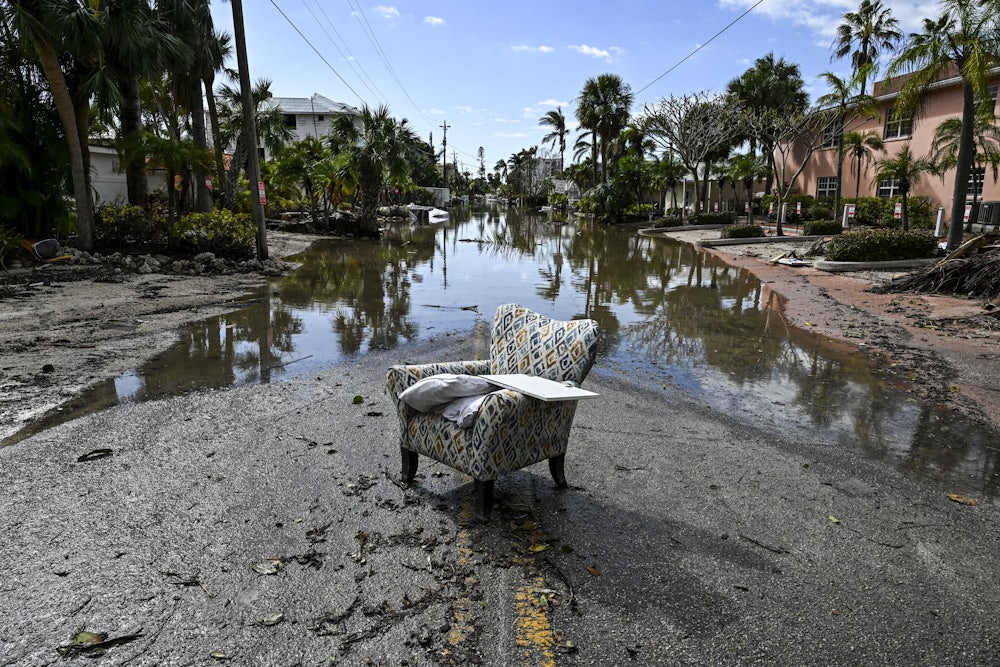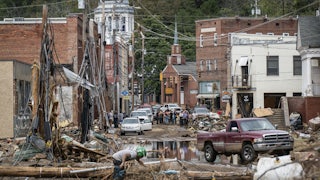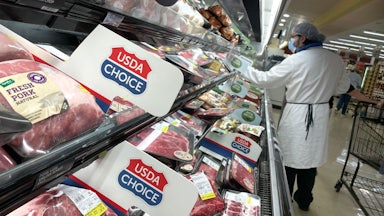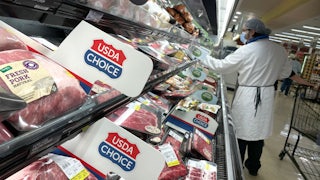It will take some time to know the full scope of the damage caused by Hurricanes Helene and Milton. Early estimates suggest Milton caused between $30 and 50 billion worth of insured losses; insurers in Florida could now be looking at their fifth straight year of losses above $100 billion. Analytics firm CoreLogic estimates that Hurricane Helene was responsible for between $20 and $30 billion of uninsured losses from flooding, which isn’t included in standard home insurance packages. Other kinds of loss are incalculable: The death toll from Hurricane Helene has now surpassed 230. At least 12 people are now believed to have died as a result of Hurricane Milton.
In addition to being hurricane season, it is also Nobel Prize season. And the last week of rolling climate disasters has had me thinking about the 2018 winner of the so-called Nobel Prize in economics: William Nordhaus. (The award is actually called the “Sveriges Riksbank Prize in Economic Sciences in Memory of Alfred Nobel,” although Nobel’s own descendents have referred to it as “a PR coup by economists to improve their reputation.”) Nordhaus won whatever you’d like to call that prize for his groundbreaking work in climate economics. Perhaps his most notable contribution has been the Dynamic Integrated Model of Climate and the Economy, or DICE model, still widely used—including by U.S. government agencies—to calculate the costs and benefits of both climate change and climate policy.
In 1991, Nordhaus wrote that 87 percent of U.S. economic activity would be “negligibly affected by climate change” because it occurs in “carefully controlled environments,” i.e., indoors. Those negligibly impacted sectors include manufacturing and mining, trade, finance, real estate, and insurance. To his credit, Nordhaus and his colleagues have updated their climate-economy models many times since then, including in response to the many, many, many criticisms of his work from fellow economists and climate scientists. In his 2018 Nobel acceptance lecture, Nordhaus described warming of four degrees Celsius (7.2 degrees Fahrenheit) above preindustrial levels as the “optimal” point at which the costs and benefits of climate change are balanced. In last year’s DICE update, the “cost-benefit optimal” amount of warming is just 2.7 degrees Celsius.
Global temperatures in 2024 are expected to average out at around 1.5 degrees above preindustrial levels; nothing about that seems optimal. Places once thought to be “climate havens,” notably Asheville, will take years to recover from the two feet of rain that Hurricane Helene dumped on western North Carolina. The whole idea of a climate haven has taken a beating since then; experts have noted that the idea is better thought of as a marketing ploy by cities like Buffalo and Duluth that are eager to attract climate-weary, well-off property buyers to bolster local tax bases. “The idea of a climate refuge itself is kind of an escapist fantasy,” Billy Fleming, director of the McHarg Center at the University of Pennsylvania, told Vox. “It’s about keeping the real estate machine churning, which is the thing that pays for everything else in the city.” With more than 80 percent of homebuyers now reportedly considering climate risks when shopping for a home, listing platforms Zillow and Redfin have added climate risk indicators for prospective buyers to suss out how vulnerable specific properties are to future disasters.
Putting the tools to assess climate risks in consumers’ hands seems like common sense: People ought to know how likely it is that their house will end up underwater. It also highlights just how much of the work of planning for and mitigating the climate crisis is placed on the shoulders of ever so slightly more well-informed consumers.
That’s also more or less been the idea behind carbon pricing. Nordhaus has long joined other neoclassical economists in advocating for carbon pricing as the most elegant and efficient climate policy; the DICE model has been a key way that the U.S. estimates the “social cost of carbon” it uses in calculating the costs and benefits of emissions-reducing policies. The promise of carbon pricing, for economists, is that individuals can make their own cost-benefit analysis: If a carbon price makes it more expensive to buy gas, for instance, they’ll drive less or replace their fossil fuel–powered car with an electric vehicle. Provided with the right information—chiefly prices, according to orthodox economists—people will navigate the world as rational and responsible market actors.
Carbon pricing has thankfully fallen out of favor among wonks and lawmakers. Yet even as governments embrace a more active role in subsidizing low-carbon technologies through green industrial policies like the Inflation Reduction Act, they’ve been slow to accept the reality that navigating the climate crisis isn’t just a matter of adjusting the cost of buying and making the goods that drive mitigation and adaptation. Disasters like Hurricanes Helene and Milton lay bare the full scope of the climate crisis and what’s needed to deal with it: Rising temperatures will transform the global economy in one way or another.
Neither consumers nor corporations—however many subsidies or climate risk databases they have access to—are equipped to make the twenty-first century’s most important decisions at the level of the household or firm: What places are too risky for anyone to live? How can the people who live in those places now find new, full lives elsewhere, and how will they get there? Continuing to leave these choices in private hands will leave more and more people in harm’s way. Only governments are equipped to make the kinds of plans that will keep people safe as temperatures rise and damage compounds. There is no such thing as a “carefully controlled environment” in a warming world; markets won’t be much help in creating a safer one, either.








